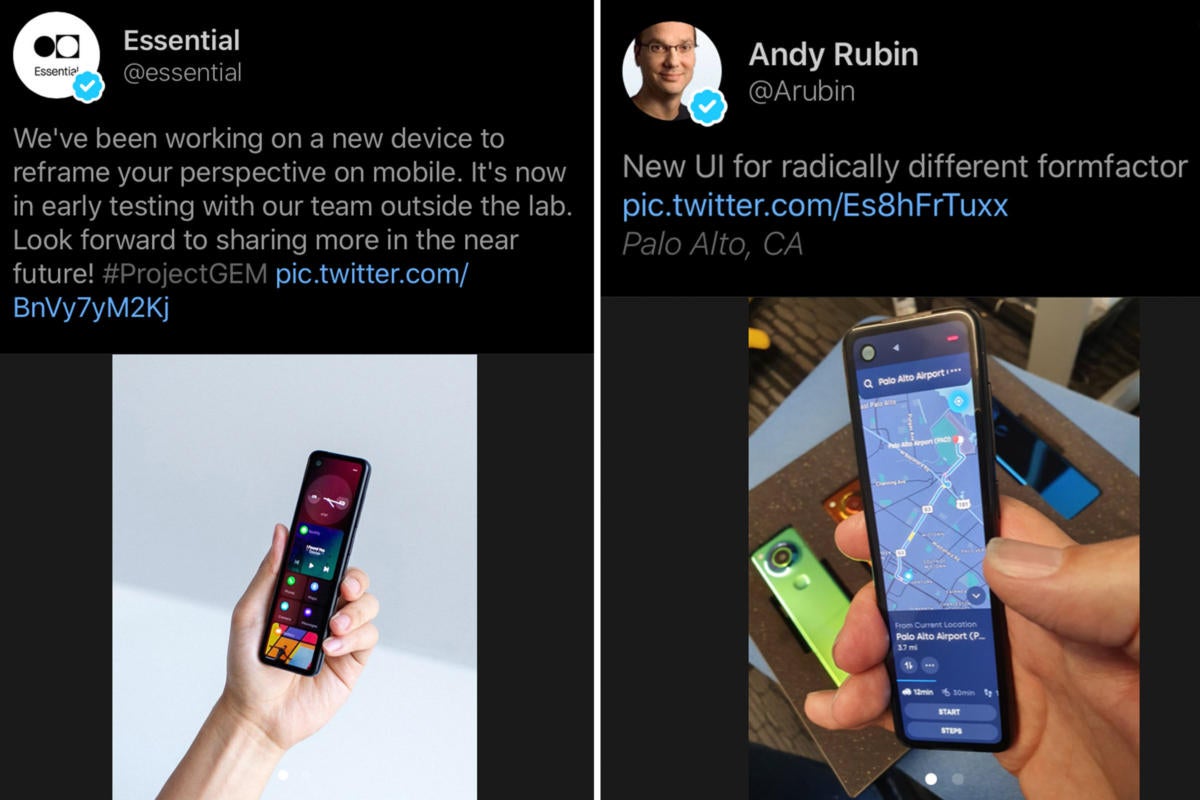It’s been more than two years, several price cuts, and one mass layoff since Andy Rubin’s Essential burst into the scene with a new kind of phone. Hailed by critics and instantly declared the next big thing, it was the first Android phone with a notch, no headphone jack, a modular magnetic system, and an overinflated sense of purpose.
In no uncertain terms, Essential Phone was a beautiful disaster. Initial figures put sales south of 100,000, the promised charging and audio mods arrived late or not at all, and the AI-powered home hub turned out to be pure vaporware.
But now Rubin expects us to forget all that—along with a series of sexual misconduct allegations that reportedly forced him out of Google back in 2014—and trust in his new smartphone vision. In a thinly veiled tease of the next Essential Phone, Rubin tweeted out a series of pics of what he calls a “new UI for a radically different formfactor (sic).” A few hours later, his company confirmed the images as showing “a new device to reframe your perspective,” claiming that “it’s now in early testing with our team outside the lab.”
And radical it is. The phone looks to have a a glossy “Colorshift” back with a single bulbous camera, a hole-punch selfie cam, uniform bezels, and an extra-tall screen that puts the Note 10+‘s 19.5:9 aspect ratio to shame. In all honesty, it looks more like a new Apple TV remote than a phone, and it raises for more question than answers.
Let’s start with the most obvious one: what operating system is it running? Rubin touted the unique UI of the new device, but the two screenshots don’t look like any version of Android I’ve ever seen. So it’s safe to say that it’s a proprietary OS designed for the screen’s a ridiculous ratio. Rubin may have the Android pedigree to stand one, but the last thing we need is a new smartphone OS in 2019.
 Andy Rubin/Essential
Andy Rubin/EssentialAndy Rubin is teasing a new Essential Phone but I have lots of questions.
Also, what about our perspective needs reframing? The first Essential Phone may have been a monument to Rubin’s self indulgence, what with its lack of a logo, “real passion and craftsmanship,” and desire to “change how successful technology companies are built forever,” but at least it stuck to a basic smartphone formula. The pictures of Essential Phone 2 show screens with numerous tiles for time, music, photos, and apps all showing at once, but how is that a benefit? To do anything with the phone we’re going to need to launch an app anyway, which leads to the rest of my questions:
- How do you type on it?
- How do you watch a video on it?
- Does it run Google apps?
- Can you do anything other than use Essential’s stock apps?
- How do you play games other than Tetris?
- How do you hold it?
- How do you use it?
- How secure is it?
And if I wasn’t clear earlier: what’s the point? As far as I can tell, Essential Phone 2’s design is little more than Rubin’s desire to be different while once again admonishing the rest of the industry for not seeing it sooner.
The only thing Essential Phone was truly better at doing than other Android phones was delivering timely and regular updates, often as fast as Google’s own Pixel phones, even to this day. But assuming Essential Phone 2 runs an in-house OS, what guarantees will we have that it’s safe, secure, and private? After Essential Phone crashed and burned and failed to deliver on its biggest promises, now we’re supposed to believe that Rubin has created a ground-up reimagining of the smartphone experience that is mature enough to challenge Android and iOS? Color me skeptical.
Let’s face it, without Rubin’s involvement, Essential wouldn’t have received nearly as much attention as it did. Maybe we shouldn’t repeat that same mistake this time.
This story, “The ‘radically different’ Essential Phone 2 is on its way, but why?” was originally published by